Breaking Down the Biggest 2025 WSOP Hands – Part 9
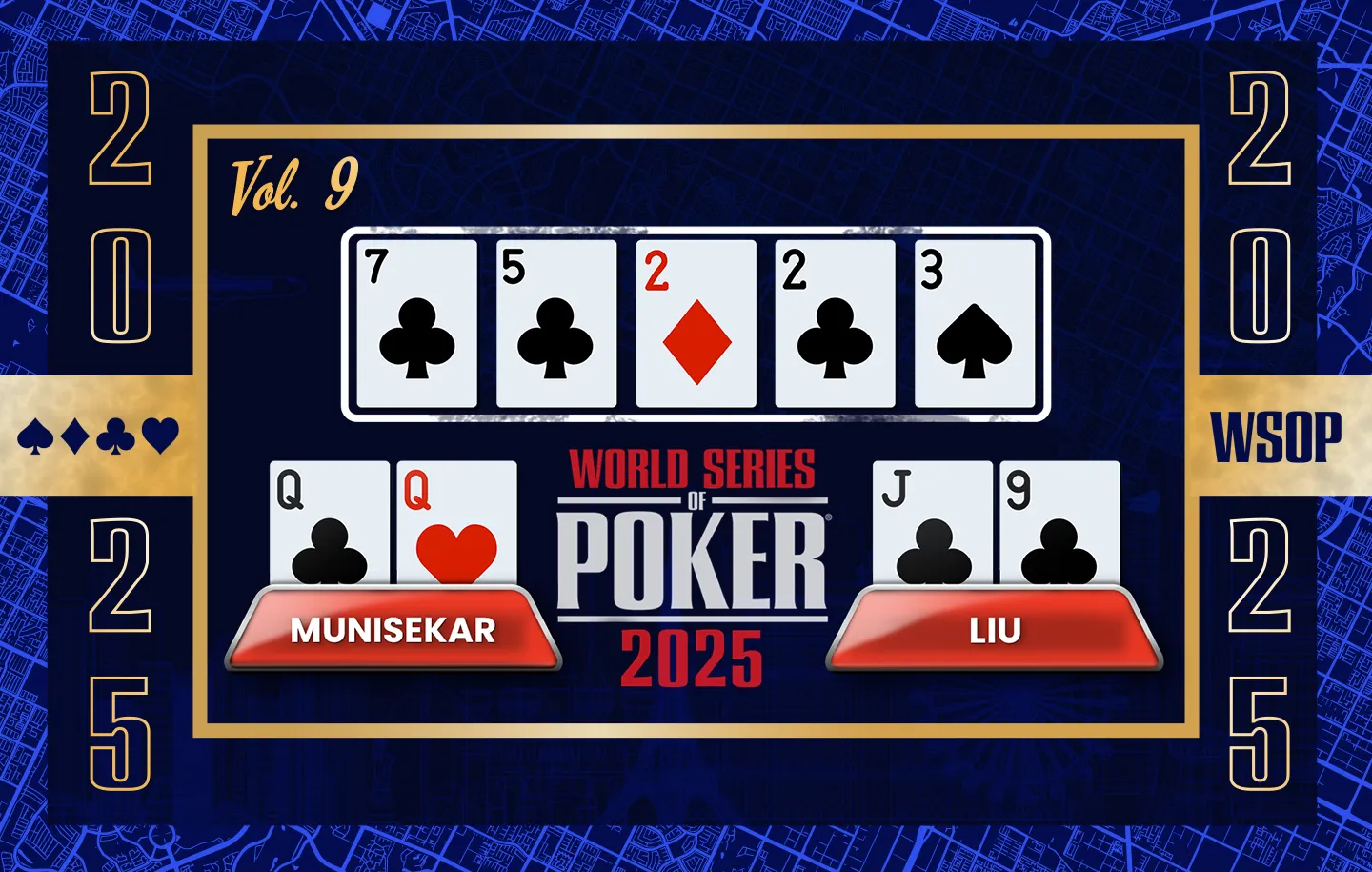
-
T&Cs Apply | Play Responsibly | GambleAware
+18 / T & C apply / Play responsible
-
T&Cs Apply | Play Responsibly | GambleAware
18+ | Play Responsibly | T&C Apply

- Fact Checked by: PokerListings
- Last updated on: November 9, 2025 · 9 minutes to read
We continue with our look back at the 2025 World Series of Poker Main Event by passing now to the second, third and fourth days and the lead-up to the money bubble. The initial rush of being in the main event now passed and players are settled in for a long grind to the final table.
Here are some of the more memorable hands that occurred!
Day 2A-B-C – Hellmuth’s Sizing Hurt
Here on Level 10 with blinds at 1k and 2k with a 2k ante, we find the poker brat himself, Phil Hellmuth in the hijack and raising to 6k. Santiago Montes defended his big blind and the two went to the flop, where both checked.
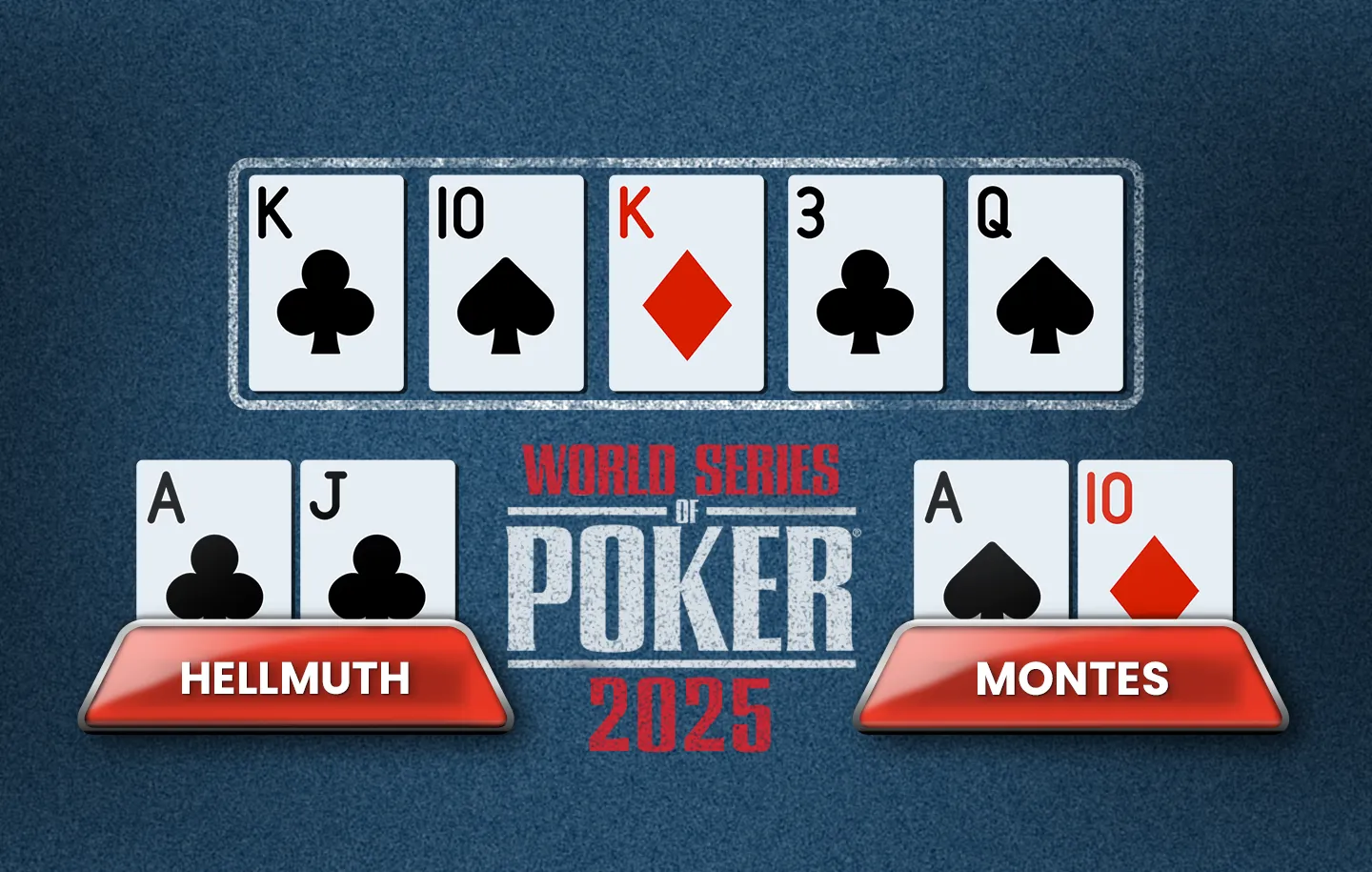
Montes beat 4k on the turn, to which Hellmuth called, which got Montes to slow down, checking the river. Hellmuth bet 14k, to which Montes went into the tank, eventually folding face up. Hellmuth showed, saying “I bet too much!”

Phil could not have asked for a worse flop than King-King-Ten, as Montes took the lead with top two to Hellmuth’s top pair, top kicker.
You can’t necessarily fault Montes for checking the flop, being out of position and all, but Montes missed an opportunity by not betting bigger on the turn. With 15k in the middle, giving Phil better than 4 to 1 on the turn to call with both straight and flush draws available seems like a recipe for Montes to donate to the Poker Brat, as there would be so many scare cards that could come on the river that Montes would have had to checked to Phil, giving him the opportunity to bluff to win the pot.
The interesting thing is – Montes thought Phil WAS bluffing as he asked Phil to show him the bluff after flashing his Ace-Ten. If you were scared of the bluff, as Montes clearly was, betting so little on the turn seems to serve no purpose, other than to build a pot that you are fearful of losing.
Had the river bricked, would Phil have tried to bluff?
Maybe, but Montes would have been in a much better position to analyze and call had he done so. Once again proving that playing hands out of position especially against aggressive players like Phil on wet boards is a very challenging spot to be in.
Day 2D – Three-Way for Broadway
On day 2D, we find this doozy of a hand in level 10 with blinds at 1k and 2k with a 2k ante. From the hijack, James Girouard min-raised, and Adin Aragon and Christian Calcano called from the blinds. The flop saw it checked to Girouard who bet 6k, bringing both blinds along.
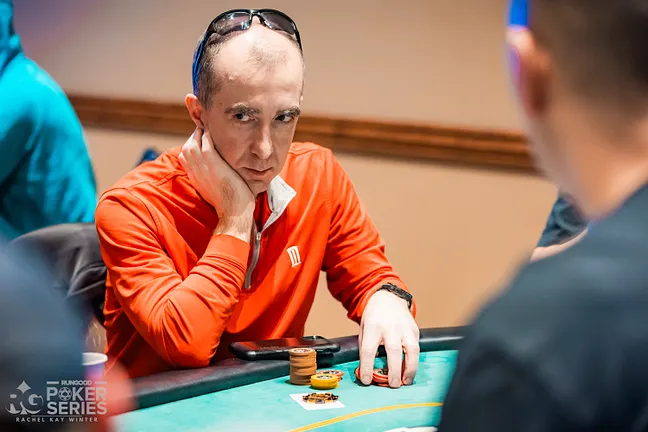
With a ballooning pot now over 30k, all three checked the turn, before the river brought a 20k bet by Girouard. This time though, Aragon check-raised all in for 37k total, pushing Calcano out of the way and sending Girouard to the tank. He called, and subsequently mucked.
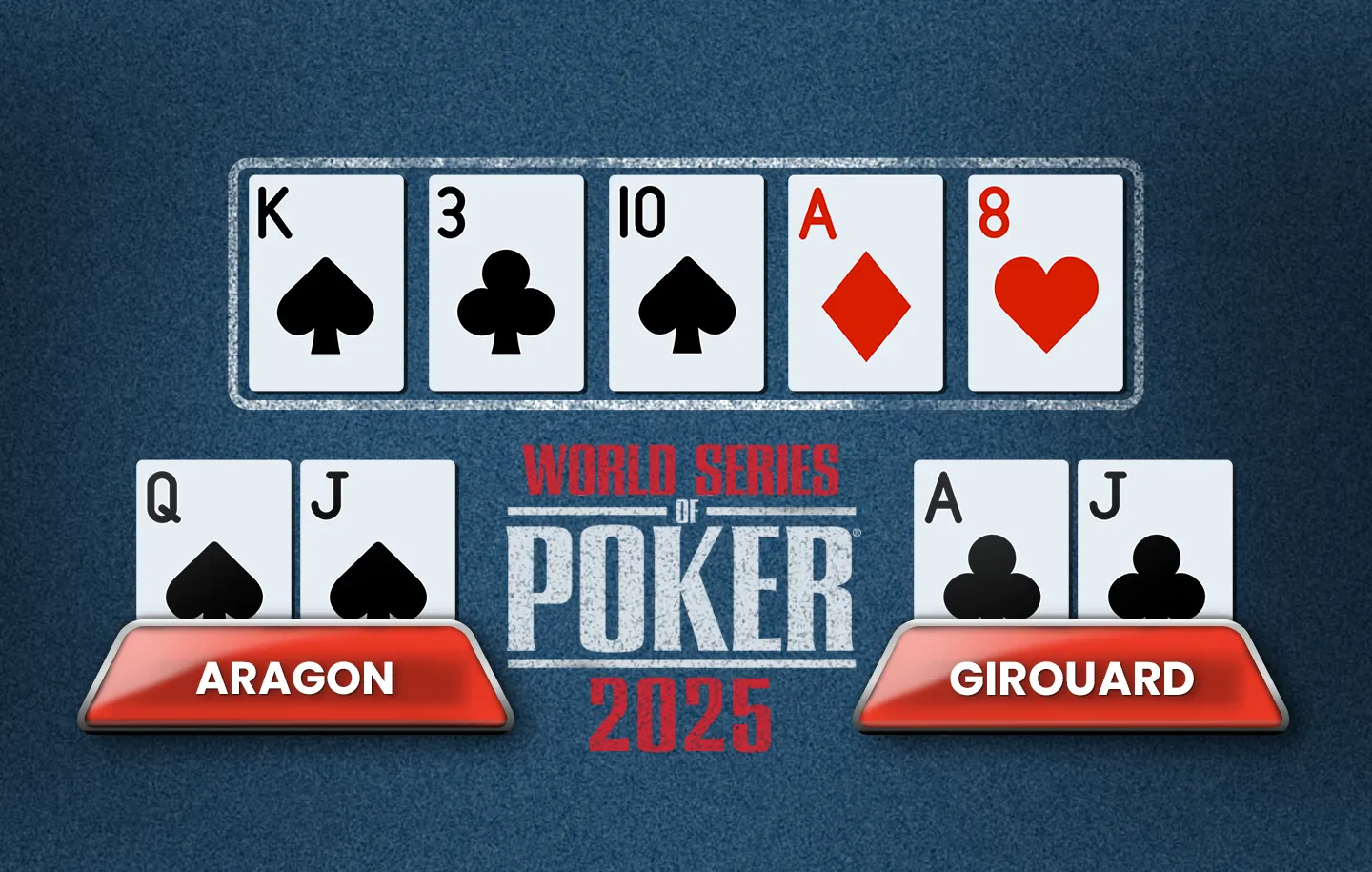
Seeing this hand with the cards-up, you see the pain that Girouard was in. He has a solid starting hand, worth raising with, but partially misses the flop. Against two players on that wet of a board is actually a tough position to play from, as the blind’s ranges are going to be wider and has the potential to hit that board or draw.
Unlucky for Girouard, the worst turn card came – handcuffing him to the hand that he had been the aggressor up to that point, but leaving him drawing dead to a chop.
The challenge really here is the fact that both blinds not only called pre-flop, but called post flop. This created a 30,000 chip pot going to the turn that Girouard was going to now have a very difficult time getting away from, especially when he bets the 20k on the river.
Now I get why he sized up in this spot but he may not have realized that Aragon only had 37k behind – Girouard prices himself in (57k to 17k → 3 ⅓ to 1 on that river call) where he had top pair against a small blind whose range would be wide.
Ultimately Girouard might have been able to escape had he simply checked the river – he had showdown value, plus he would have protected himself against this exact bet – one that he would have had odds to call for. Instead of saving that 57k, he ended the night on fumes.
Day 3 – Cold Calling a Three-Bet – Trapping or Being Trapped?
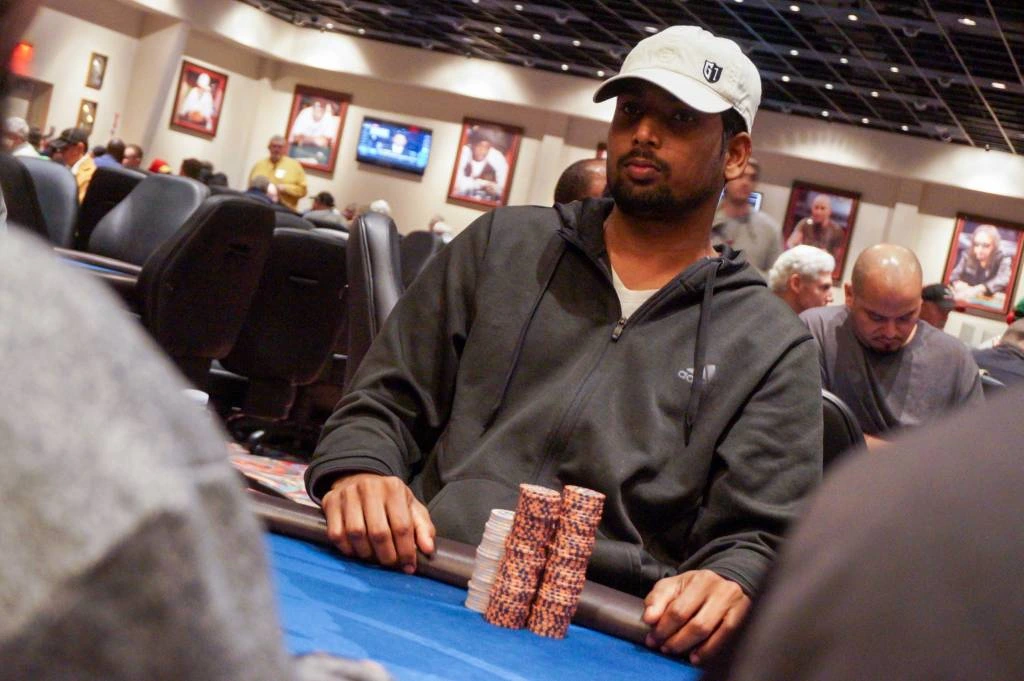
Still on Level 10 with blinds at 1k and 2k with a 2k ante, we find Roeland Peeks raising to 4k, only to be immediately three-bet by Osbrt Liu to 12k.
To the table’s surprise, Devaraj Munisekar cold-calls from the big blind, pushing Peeks out of the hand. With a big pot already, the two see the flop through to the turn, where Munisekar leads for 12k, quickly called by Liu. On the river, Munisekar bet37k, to which Liu snap called him.
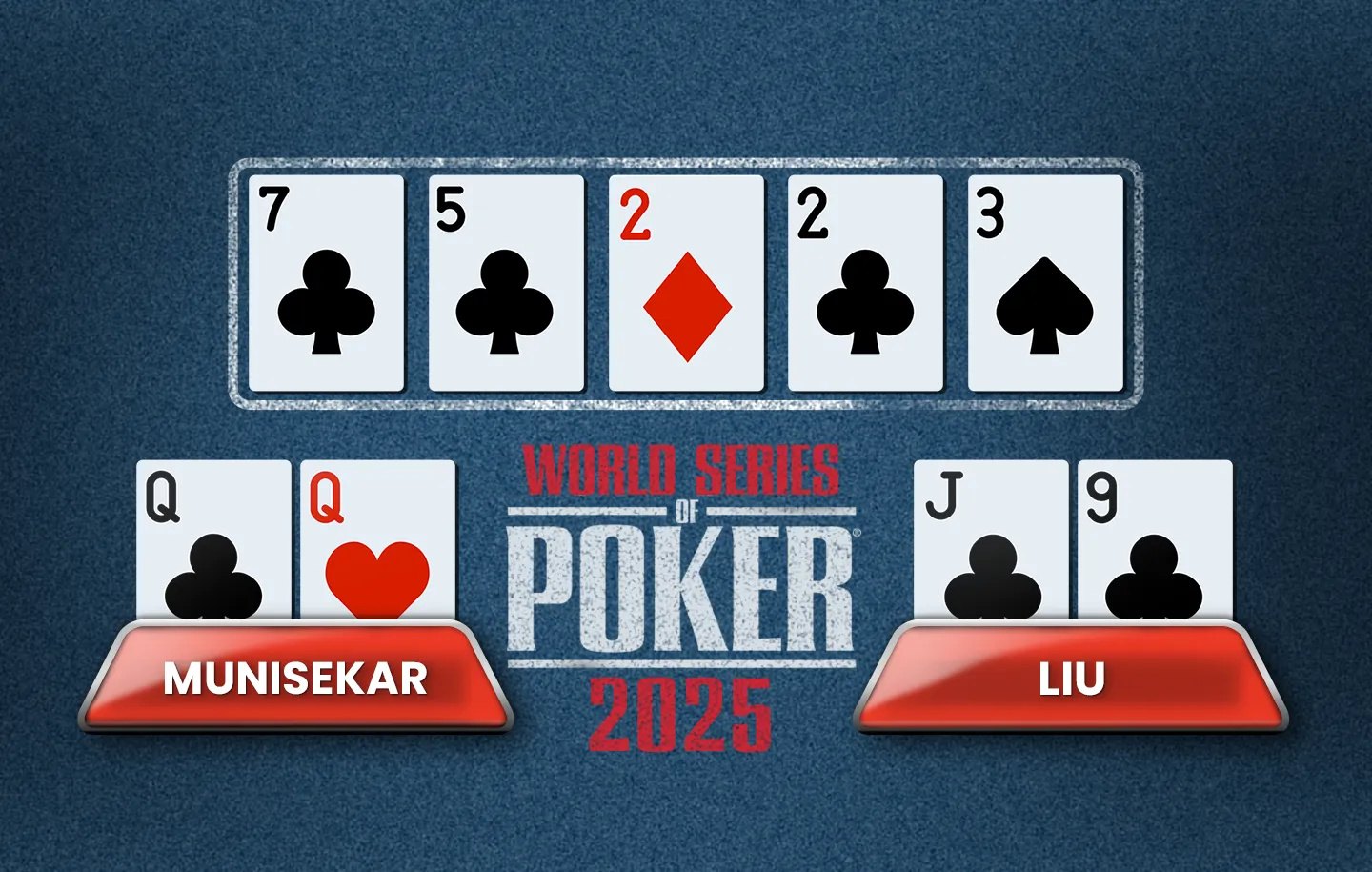
Cold-calling a three bet is always a suspicious-looking play at a poker table, especially from the big blind of the main event day 2D, but Munisekar decided now was the time to try and lay a trap for the two still in the hand at this point when he did just that from the big blind.
Liu’s range certainly missed the flop entirely, and Munisekar had to feel good about his hand holding a club blocker, so when the turn hit, Munisekar saw a chance to build a pot he felt confident he was leading in.
Trouble is, sometimes when a player does something unexpected – like Liu did he three-betting in position but with Jack-Nine of clubs, it works out for him, and Liu hits his flush and then has to dodge outs on the turn to avoid getting re-drawn on. Liu’s aggressive play earned him a six-figure pot, and raising more questions than answers for Munisekar about how far off his read was in this hand.
At least Munisekar still had a stack to play with, sitting at this point around 45 big blinds.
Day 3 – Is There A Right Way to Play Pocket Jacks?
At another table on Level 10, we find Peter Bloch in middle position raising the blinds of 1k and 2k up to 4500, while Santhosh Suvarna defended his big blind On the flop, Bloch fired another 4,500, to which Suvarna called. The turn brought no action from either player, but the river saw Suvarna spring to life with a 27k bet, to which Bloch reluctantly called, only to muck.
We all know that there is no good way to play pocket jacks from any position, but there are better ways to play them than the line Bloch took. The issue comes from the information Bloch took from the flop call by Suvarna.
He’s an aggressive player, capable of battling any of the top pros as we have seen him do in some of the biggest buy-in poker tournaments, so when Suvarna comes along on the flop, and the turn pairs the three, and Bloch checks, knowing his hand, it has all of the appearance of a hand that misses the flop – which he technically did.
The turn and river appear to be bricks – which Suvarna knows – so he sizes his river bet to look like a bluff to Bloch. The problem for Bloch – he fell for it, calling off the overbet and realizing that he was miles ahead on the flop, only to be outdone on the turn by one of the lower starting hands in Texas Hold’em.
The lesson for Bloch – and anyone reading – numbers will tell you patterns in general, but they won’t tell you the specific story in a hand. Defending your big blind too wide too often will typically lead to losing sessions, but like anything else in poker, playing a hand like this will pay off occasionally – too bad for Bloch that he had to pay off Suvarna for playing jacks too passive post-flop.
Day 4 – Is Your Story Believable?
Our final hand review today focuses on one that happened after the money bubble burst in Level 20. Oliver Braddock and Richard Buckingham went at it, with one’s timing and story not quite on point.
To start, Braddock is in middle position with a stack around 1.3 million, while Buckingham sat with roughly 1.95 million in late position. With blinds at 10k and 20k with a 20k big blind ante, Braddock opened to 40k and Buckingham three-bet up to 125k, soliciting a call from Braddock. Both players checking the flop and turn, Braddock sent 200k into the middle on the river, which brought a raise from Buckingham up to 500k.
After checking his stack, Braddock flatted, saw Buckingham’s hand and collected the pot.
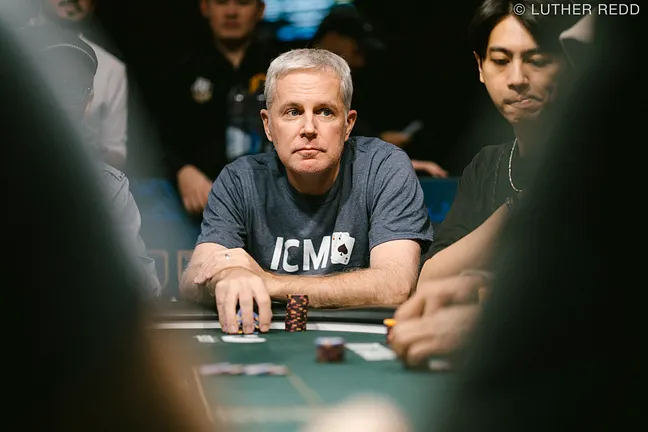
Photo Credit: Luther Redd
If you are going to attempt a bluff at any point, you need to be fully committed to it from the flop, and your betting pattern has to match the texture of the board to make your opponent believe you are representing the hand the board shows.
In this case, Buckingham doesn’t really do that, mainly because of the in-position three-bet he made pre-flop. That would have narrowed his range down considerably, and this board does not fit the story someone who three-bet pre-flop would be telling, especially because of the fact that Buckingham checked twice, in position. Play this out:
- If he had a premium pair – pocket tens or higher for example – this is the type of board that you have to protect your hand, not to mention build a pot. He should have bet the flop at the very least, if not the flop and turn, and see how Braddock reacted
- If he had premium paint – Ace-King of a suit for example, this is again the type of board one would expect to bet at least once because of the possibility of having the nut flush by the river. Braddock would have been in an awkward spot on the river calling this check-raise if it had looked like Buckingham had the nut flush, but his passiveness before then twice would have told Braddock that Buckingham missed, and to trust that read, which he eventually did.
Because Buckingham didn’t follow this through from the flop, he left the door open for Braddock to read through his raise on the river, and instead of possibly stealing a large pot from Braddock, or at worst, losing a small one, his reactive raise on the river cost him an additional 30 big blinds.
Next time we approach the final table and focus more on Michael Mizrachi steamrolling his way to the title, but there was a lot of poker in between this hand & the Grinder holding the main event bracelet that we’ll dive into!
Read more:
- Biggest 2025 WSOP Hands – Part 1
- Biggest 2025 WSOP Hands – Part 2
- Biggest 2025 WSOP Hands – Part 3
- Biggest 2025 WSOP Hands – Part 4
- Biggest 2025 WSOP Hands – Part 5
- Biggest 2025 WSOP Hands – Part 6
- Biggest 2025 WSOP Hands – Part 7
- Biggest 2025 WSOP Hands – Part 8
- Biggest 2025 WSOP Hands – Part 9
- Biggest 2025 WSOP Hands – Part 10
- Biggest 2025 WSOP Hands – Part 11
-
CoinPoker4.1
- 33% Weekly
- 150% up to 2000$
T&Cs Apply | Play Responsibly | GambleAware
+18 / T & C apply / Play responsible
-
Stake.US Poker4.3
- Rakeback 5%
- $55 Stake Cash + 260K Gold Coins
T&Cs Apply | Play Responsibly | GambleAware
18+ | Play Responsibly | T&C Apply
-
Appeak Poker4.1
- 1,000 Chips Daily
- FREE 5,000 Chips
T&Cs Apply | Play Responsibly | GambleAware
T&Cs Apply | Play Responsibly | GambleAware
-
- 2,500 Gold Coins + 0.50 Sweeps Coins
T&Cs Apply | Play Responsibly | GambleAware
18+ | Play Responsibly | T&C Apply
-
WSOP.com4.3
- Up to 70%
- 100% up to $1000
T&Cs Apply | Play Responsibly | GambleAware
T&Cs Apply | Play Responsibly | GambleAware
